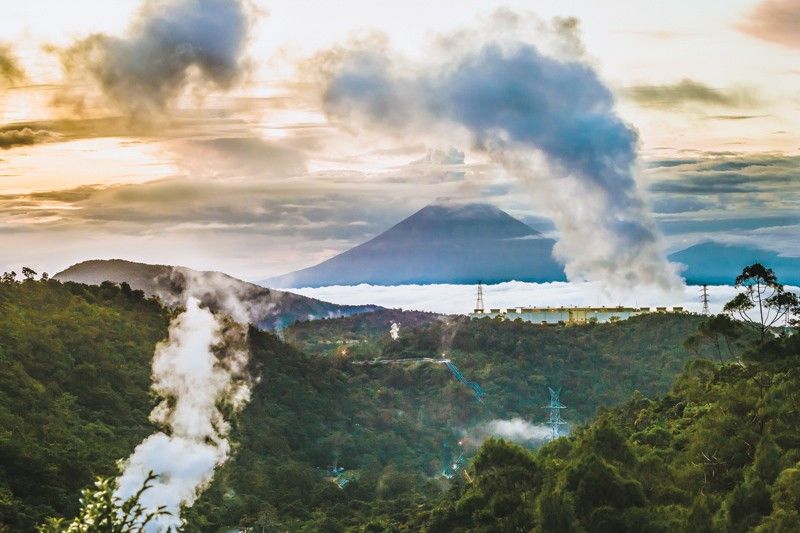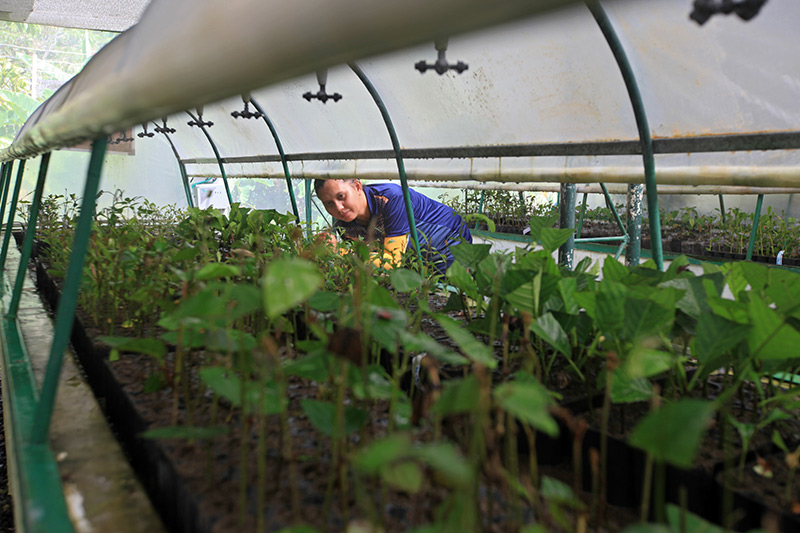EDC goes carbon negative via geothermal energy

MANILA, Philippines — Reading through the GRI Content Index of Energy Development Corporation’s (EDC) 2018 Sustainability Report, one will easily notice zero reduction in the company’s energy consumption. This is basically because energy production is EDC’s core business, and a better perspective to look into is how the company ensures access to “affordable, reliable, sustainable and modern energy for all” or the seventh Sustainable Development Goal (SDG) of the United Nations (UN).
EDC is the largest 100% renewable energy company in the Philippines with 44 years of world-renowned expertise in geothermal technology, operating 1,181 MW of geothermal, 150 MW of wind, 132 MW of hydroelectric, and 12 MW of solar — for a total of 1,475 MW of clean and renewable energy.
As of 2018, it had generated total energy sales of 8,945.3 GWh while avoiding 7,782,411 tons CO2e (based on EDC’s 0.1 ton CO2/MWh intensity).
The company is recognized as a world leader in wet steam field technology, with strategic geothermal business units in Bicol, Leyte, Negros Island, and Mindanao. It also operates one of the biggest combined wind and solar farms in the region, located in Burgos, Ilocos Norte, and substantial hydro assets located in Nueva Ecija.
The green initiative was heightened in 2016, when Federico Lopez, chairman and chief executive officer of EDC announced that they would forego investments in coal and only pursue clean energy. In 2017, the company adopted the First Philippine Holdings Corp. (FPH) Sustainability Framework, which is “focused on system value and acknowledges that our business can only grow and prosper if the ecosystems and natural resources on which we depend also grow and prosper.”
‘Geo 24/7’

Cleaner, renewable and more efficient—and when extracted and processed using high-efficiency technology—geothermal energy promises to be the future’s most sustainable and powerful energy source.
Unlike other sources of clean, renewable, but intermittent sources, only geothermal energy provides consistent baseload power, thus EDC refers to their primary power source as “Geo 24/7.”
Yes, there are other forms of energy that also provide baseload power like coal but it has been known to have harmful effects on our health and to the environment. Moreover, EDC adheres to international standards and is certified against ISO 140001:2015 (Environmental Management System) in two of its facilities (MAGBU and NIGBU-SNGP). All EDC environmental and geoscientific laboratories are also accredited for ISO/IEC 17025 to ensure its competence in testing and calibration.
For emission intensity, EDC measures the emission rate of a given pollutant against the MWh of energy generated. In 2018, the company retained its carbon intensity of 0.10 ton CO2 equivalent per MWh as there were no significant changes in the carbon intensity per facility. This carbon intensity is only a tenth of the carbon intensity of an average coal power plant, which has a carbon footprint of 0.97 tons CO2 equivalent per MWh.
“Our effective emissions management mechanisms, coupled with our nationwide greening program, has allowed EDC to maintain its carbon negative status. We remain a carbon negative company as the vegetation in our geothermal reservations absorbed close to five times the amount of our CO2 emissions in 2018,” the report said.
EDC’s forest protection and restoration initiatives resulted in the capture and storage of carbon at a rate of more than 1.1 million tons annually, equivalent to 3.9 million tons of CO2. The company protects and manages four geothermal reservations, which cover close to one percent of the country’s land area.
To better manage its operations, EDC implements a Zero Discharge System (ZDS), where all the geothermal water extracted, such as brine and condensate, are reinjected back to the geothermal reservoir after they have been used to generate power. Through this system, EDC avoids the contamination of water resources while sustaining its geothermal reservoir.
Understanding the repercussions of coal and pondering on geothermal is half the battle of searching for alternative energy sources for the future. Choosing the latter and ensuring an efficient system with minimum environmental impact finishes the fight.
The mentioned disclosures explain only part of EDC’s environmental performance. In the process of achieving SDG 7, the company has also been promoting decent work and economic growth (SDG 8); climate action (SDG 13); life on land (SDG 15); and, through its corporate social responsibility (CSR) efforts, fighting against hunger and poverty (SDGs 1-2); enhancing good health and well-being (SDG 3); and providing access to quality education without discrimination (SDG 4).
Talk about “good energy” that radiates in all directions.
- Latest

























